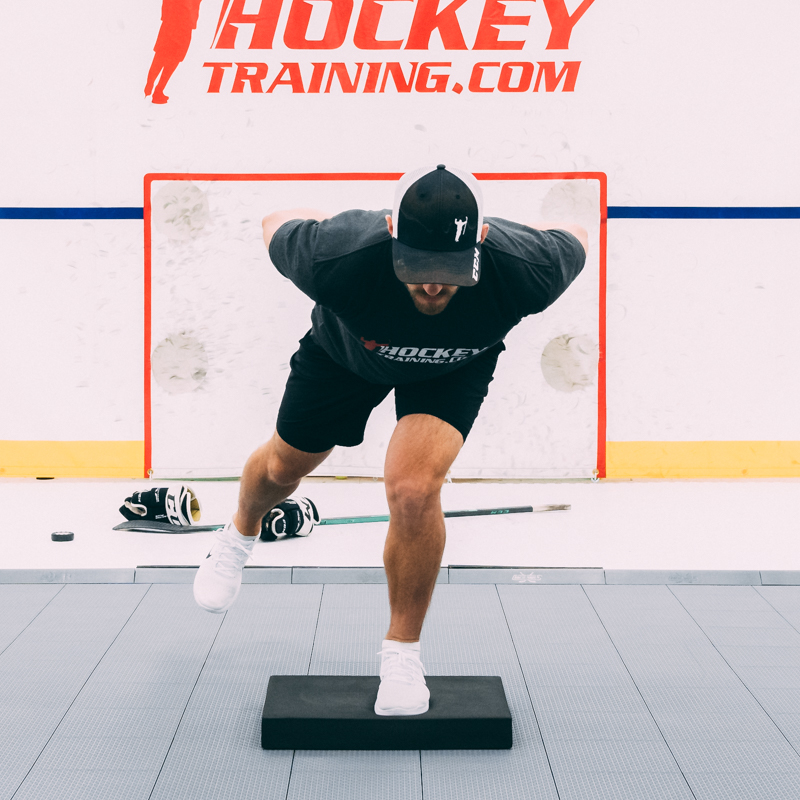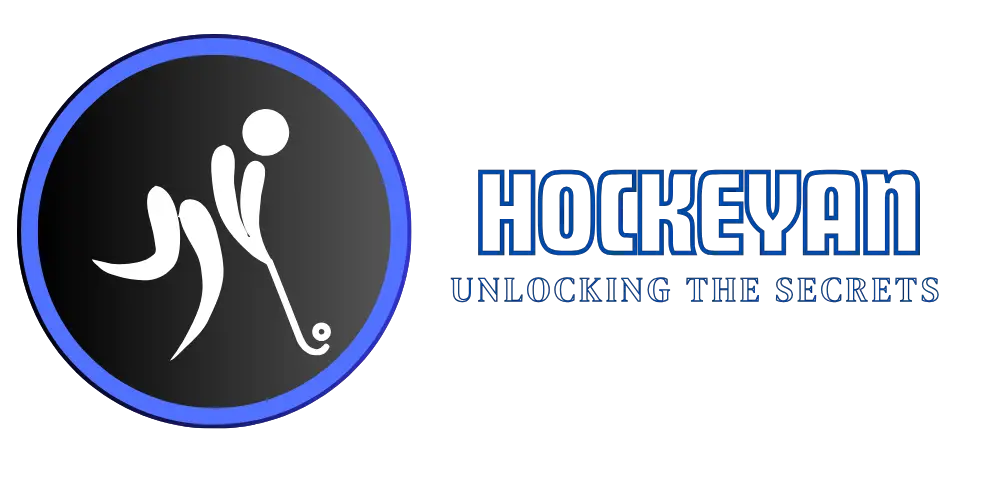Speed is crucial for hockey players. It separates average players from great ones.
Speed Training for Hockey enhances game speed, quickness, and stamina. Created by Kevin Neeld, the program offers 12 weeks of off-season training. It’s tailored for hockey’s unique demands, ensuring players maximize their genetic potential. Whether under 14, under 18, or over 18, this program is designed to fit your needs perfectly. With an extensive exercise video database and performance testing battery, players can track their progress and hone their skills safely. Nutritional and recovery guidance ensures that athletes avoid overtraining, while flexible training options accommodate various equipment availability. Ready to boost your hockey speed? You can learn more about Speed Training for Hockey here.
Introduction To Speed Training For Hockey
Speed is essential in hockey. Players need quickness to outmaneuver opponents and react quickly. The Speed Training for Hockey program, created by Kevin Neeld, the Boston Bruins’ head performance coach, helps players develop speed, quickness, and stamina through a comprehensive off-season training program.
Importance Of Speed In Hockey
In hockey, speed is a game-changer. It allows players to reach the puck first, evade defenders, and create scoring opportunities. Fast players have an edge over slower opponents. Developing speed can significantly improve a player’s performance on the ice.
Overview Of Speed Training Benefits
The Speed Training for Hockey program offers numerous benefits:
- Improves Speed and Acceleration: Proven off-ice training methods and on-ice techniques enhance player quickness.
- Maximizes Genetic Speed Potential: This method avoids common mistakes in long-term athletic development, ensuring players reach their full potential.
- Tracks Progress: A 20-item performance testing battery helps identify strengths and weaknesses, allowing players to monitor their progress effectively.
- Ensures Safety: Detailed guidance on exercise technique maximizes effectiveness and minimizes injury risk.
- Flexible Training: Modifications for exercises based on available equipment ensure training can be done anywhere.
Overall, the Speed Training for Hockey program is designed to help players of all ages and skill levels improve their speed, quickness, and overall performance on the ice.

Credit: www.youtube.com
Key Features Of Effective Speed Training Drills
Effective speed training drills are essential for hockey players aiming to enhance their performance. These drills focus on various aspects, such as agility, strength, endurance, and quick footwork. Below, we’d like to highlight the key features that make these drills successful.
Incorporating Plyometric Exercises
Plyometric exercises are crucial for developing explosive power. They involve quick, powerful movements that rapidly improve the muscles’ ability to exert force.
- Jump Squats: Enhance lower body strength and power.
- Box Jumps: Improve vertical leap and overall explosiveness.
- Lateral Bounds: Increase lateral movement speed and agility.
These exercises help players react swiftly on the ice and improve their overall speed.
Focus On Agility And Quick Footwork
Agility and quick footwork are vital for maneuvering around opponents and changing direction quickly.
- Cone Drills: Enhance directional changes and quick turns.
- Ladder Drills: Improve foot speed and coordination.
- T-Drills: Combine speed with directional changes.
These drills ensure players can navigate the ice efficiently and outmaneuver their competition.
Strength Training For Explosive Power
Strength training builds the foundation for explosive power, essential for quick starts and powerful strides.
| Exercise | Benefit |
|---|---|
| Deadlifts | Improve overall lower body strength. |
| Squats | Build leg muscles crucial for powerful strides. |
| Bench Press | Enhance upper body strength for better balance. |
These exercises contribute to the explosive power necessary for effective speed on the ice.
Endurance And Stamina Building
Endurance and stamina are essential for maintaining high performance throughout the game.
- Interval Training: Alternating between high-intensity and low-intensity exercises.
- Long-Distance Running: Builds aerobic capacity and overall stamina.
- Cycling: Low-impact way to improve cardiovascular endurance.
These activities ensure players can sustain their speed and performance from start to finish.
Detailed Breakdown Of Speed Training Drills
Speed training is crucial for hockey players who want to excel. Our program, Speed Training for Hockey, offers a comprehensive approach to enhance speed, quickness, and stamina. Below is a detailed breakdown of the essential speed training drills included in the program.
Sprints And Interval Training
Sprints and interval training are foundational exercises for building speed. These drills improve acceleration and top-end speed. Here is a simple sprint routine:
- Warm-up: 5-10 minutes of dynamic stretching
- 10 x 20-meter sprints with 30 seconds rest between each
- 3-minute rest
- 10 x 40-meter sprints with 1-minute rest between each
- Cool down: 5 minutes of light jogging and stretching
Ladder Drills For Agility
Ladder drills are excellent for improving foot speed and agility. These drills help players change direction quickly and maintain balance. Here are some key ladder drills:
- Two in each square
- In and out with one foot
- Lateral side step
- Hopscotch drill
- Ickey Shuffle
Perform each drill for 2-3 sets of 30 seconds, with a short rest between sets.
Cone Drills For Directional Speed
Cone drills enhance the ability to change direction quickly and efficiently. Set up cones in different patterns, such as:
| Drill Name | Setup | Instructions |
|---|---|---|
| T-Drill | 5 cones in a T-shape | Run from the base to the top of the T, side shuffle to each side and backpedal to the start. |
| 5-10-5 Shuttle | 3 cones in a straight line, 5 yards apart | Sprint to the middle cone, touch the ground, sprint back to the start, and finish by sprinting to the far cone. |
Resistance Band Drills For Power
Resistance band drills build explosive power and speed. These drills use bands to create resistance, making muscles work harder. Examples include:
- Band-resisted sprints
- Band-resisted lateral shuffles
- Band-resisted high knees
Perform each drill for three sets of 10-15 seconds, with a 30-second rest in between.
Skating-specific Speed Drills
Skating-specific drills focus on improving on-ice speed and technique. These drills simulate skating movements to enhance performance. Key exercises include:
- Stride jumps
- Skater lunges
- Single-leg pushes
- On-ice stride drills
- Plyometric jumps
Perform these drills on and off the ice to maximize their effectiveness.
Incorporating these drills into your training regimen can significantly improve your hockey speed and overall performance.

Credit: hockeytraining.com
Pricing And Affordability Of Training Programs
Speed Training for Hockey is an invaluable resource for players who want to improve their speed and performance. Understanding the pricing and affordability of these training programs helps players and their families make informed decisions.
Cost Of Professional Coaching Vs. Self-training
Professional coaching provides personalized guidance and expert insights, often at a higher price tag. Kevin Neeld’s Speed Training for Hockey program offers professional-level training at a fraction of the cost. The digital book is priced at $37, making it accessible for most families.
Self-training involves following structured programs without direct coaching. This approach is more affordable but requires discipline and commitment. The Speed Training for Hockey program includes detailed exercise videos and performance testing, ensuring players can train effectively and independently.
Investing In Training Equipment
Investing in training equipment is essential for maximizing the benefits of speed training. The Speed Training for Hockey program modifies exercises based on available equipment, making it flexible and accommodating. Essential equipment includes:
- Resistance bands
- Free weights
- Cones
- Agility ladders
The program’s flexibility allows players to use alternatives if specific equipment is unavailable, ensuring comprehensive training without excessive costs.
Affordable Training Resources And Tools
The Speed Training for Hockey program offers several affordable resources and tools to enhance training:
- Exercise Video Database: 218 high-quality videos demonstrating perfect technique, accessible with the program purchase.
- Performance Testing Battery: A 20-item test to identify strengths and weaknesses included in the program.
- Nutritional and Recovery Guidance: Simplified advice to avoid overtraining, part of the program package.
These resources ensure players receive a comprehensive training experience without additional costs.
The Speed Training for Hockey program combines affordability with professional-level training, making it an excellent investment for players seeking to enhance their speed and performance.
Pros And Cons Of Speed Training For Hockey
Speed training is essential for hockey players. It enhances performance and agility on the ice. But, like any training method, it has advantages and potential risks. Understanding these can help players and coaches make informed decisions.
Advantages Of Enhanced Speed And Agility
Speed training offers numerous benefits for hockey players:
- Improved Speed and Acceleration: The program uses proven off-ice and on-ice training methods to boost speed.
- Maximizes Genetic Speed Potential: It avoids common mistakes in long-term athletic development, allowing players to reach their full speed potential.
- Tracks Progress: A comprehensive performance profile helps identify strengths and weaknesses, allowing for targeted improvements.
- Ensures Safety: Detailed guidance on exercise technique maximizes effectiveness while minimizing injury risk.
- Flexible Training: Exercise modifications based on available equipment ensure that players can train effectively in any environment.
Potential Risks And How To Mitigate Them
Despite its benefits, speed training can pose some risks if not done correctly:
- Risk of Overtraining: Intense speed training can lead to overtraining. Following the program’s nutritional and recovery guidance can mitigate this risk.
- Risk of Injury: Incorrect technique or overexertion can cause injuries. The exercise video database with 218 high-quality videos ensures players use the correct method.
- Imbalance in Training: Focusing solely on speed can neglect other essential skills. Balancing speed training with strength, endurance, and skill training is crucial.
Balancing Speed Training With Other Skills
Speed training should be part of a well-rounded training regimen:
- Integrate Skill Training: Combine speed training with skill drills to enhance performance.
- Strength and Endurance: Exercise strength and endurance to support speed and agility.
- Recovery and Nutrition: Follow the program’s nutritional and recovery guidance to maintain overall health and performance.
Balancing these elements ensures comprehensive development and reduces the risk of injury.

Credit: next-level-athletics.com
Specific Recommendations For Ideal Users
Speed Training for Hockey is tailored to meet the unique needs of different types of hockey players. Whether you are a young athlete, an amateur, a professional, or play a specific position on the ice, this program offers custom recommendations to help you improve your speed and overall performance.
Best Practices For Young Athletes
For young athletes, it is crucial to focus on proper technique and injury prevention. The program includes:
- Age-Specific Training: Tailored routines for U-14, U-18, and 18 & over players.
- Exercise Video Database: 218 high-quality videos demonstrating perfect technique.
- Performance Testing: 20-item test to track progress and identify strengths and weaknesses.
Young athletes can benefit from a structured training program that prioritizes long-term athletic development starting at the age of 12.
Tailored Drills For Amateur And Professional Players
Amateur and professional players need more advanced and specific drills to enhance their speed and agility. The program includes:
- Comprehensive Off-Season Training: 36 weeks of programming to develop speed and stamina.
- Genetic Speed Potential: Techniques to maximize genetic speed potential.
- Flexible Training: Modifications for exercises based on available equipment.
By following these tailored drills, amateur and professional players can improve their on-ice performance significantly.
Speed Training For Different Positions On The Ice
Different positions require specific speed training to meet their unique demands. The program offers:
- Position-Specific Training: Includes training modifications for goalies and other positions.
- Performance Testing Battery: Identify position-specific strengths and weaknesses.
- Nutritional and Recovery Guidance: Simplified advice to avoid overtraining and ensure proper recovery.
Goalies, forwards, and defensemen can all benefit from customized training that addresses their needs.
Frequently Asked Questions
How Can I Increase My Speed In Hockey?
Increase your hockey speed by practicing sprint drills, improving your skating technique, building strength, and enhancing agility through targeted exercises.
How To Get Faster Feet For Hockey?
Improve foot speed for hockey by doing agility drills, plyometric exercises, and practicing quick footwork regularly. Focus on balance, coordination, and strength training.
How To Increase Explosiveness In Hockey?
Increase explosiveness in hockey by doing plyometric exercises, sprint training, and strength workouts. Focus on leg and core strength. Ensure proper technique and consistency in training.
How To Get In Shape Fast For Hockey?
To get in shape fast for hockey, focus on interval training, strength exercises, and agility drills. Maintain a balanced diet and stay hydrated.
Conclusion
Speed training is vital for hockey success. A structured approach leads to better performance on the ice. The **Speed Training for Hockey** program offers comprehensive support. Tailored exercises, nutrition tips, and progress tracking help you improve. Would you be ready to boost your speed and stamina? Check out the Speed Training for Hockey program today. Investing in your training pays off in the long run. Stay committed, train smart, and see results.





